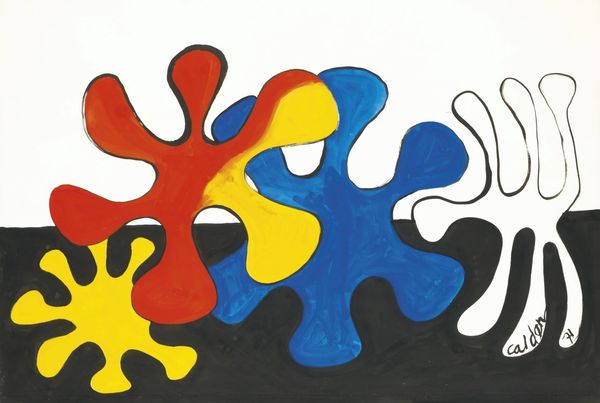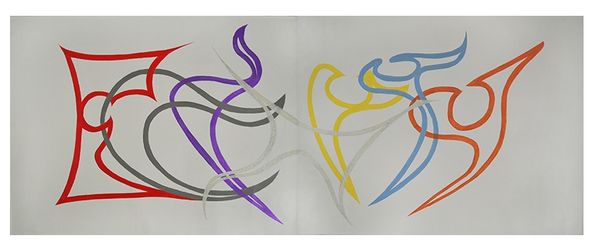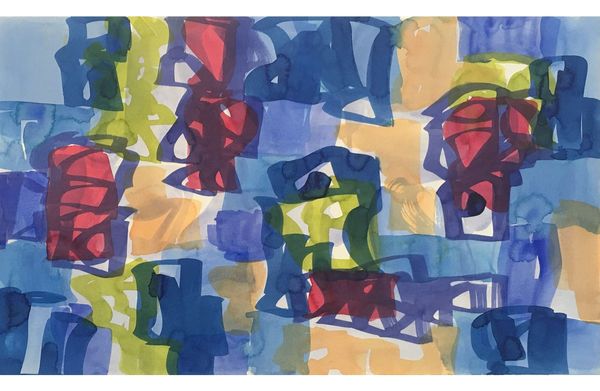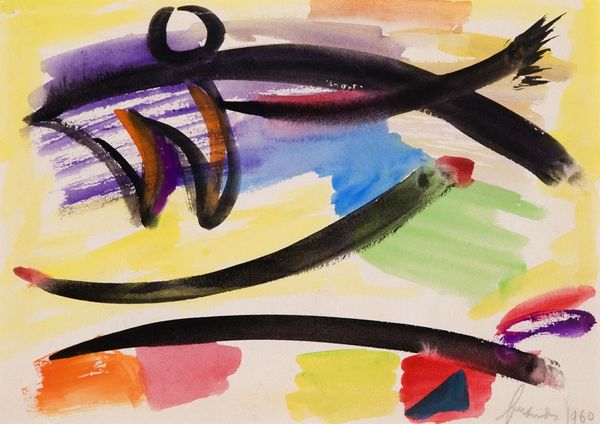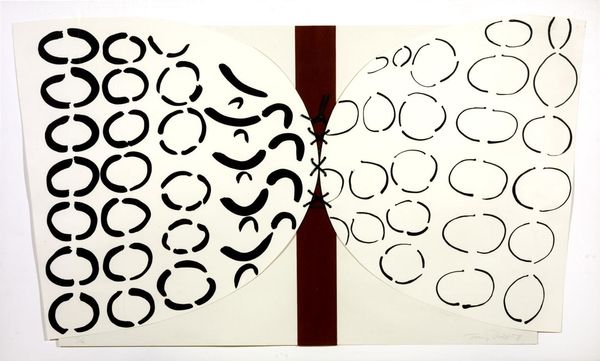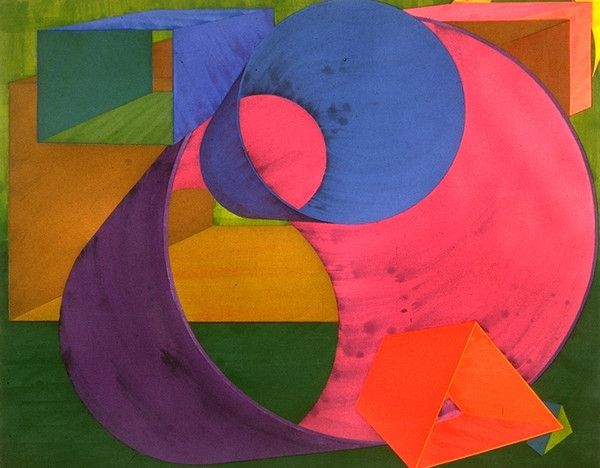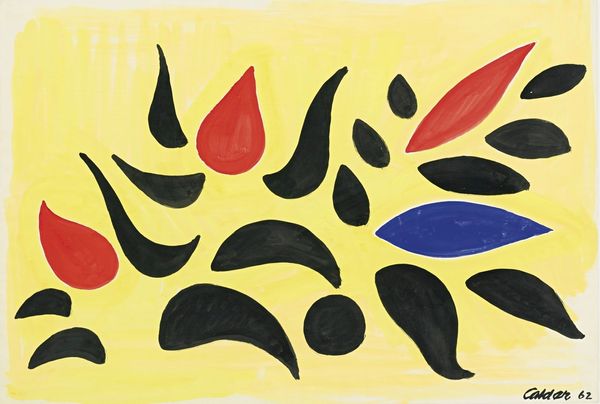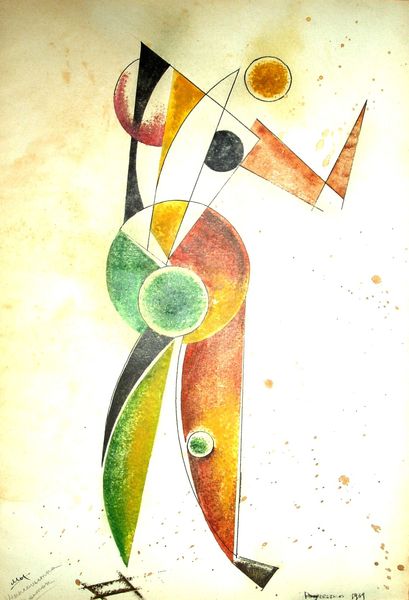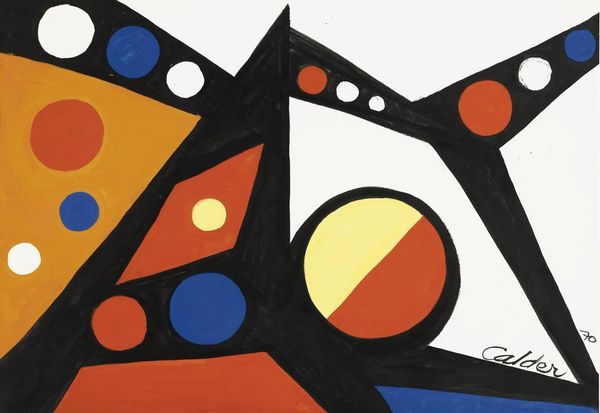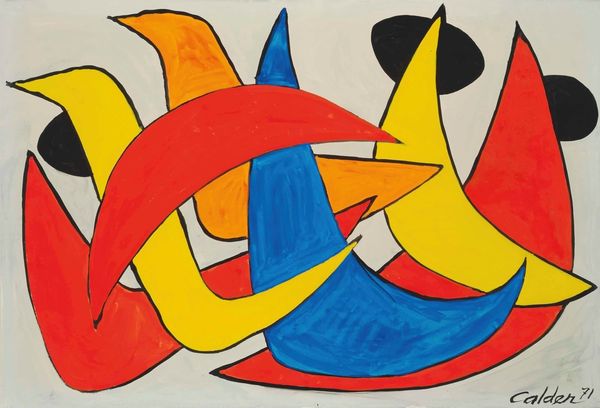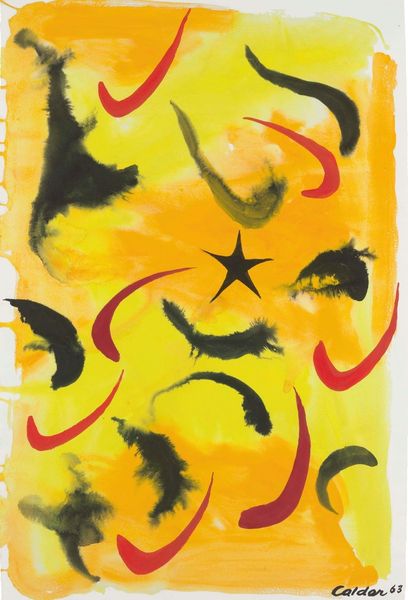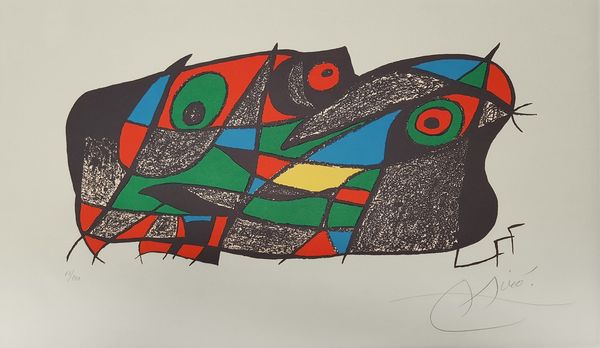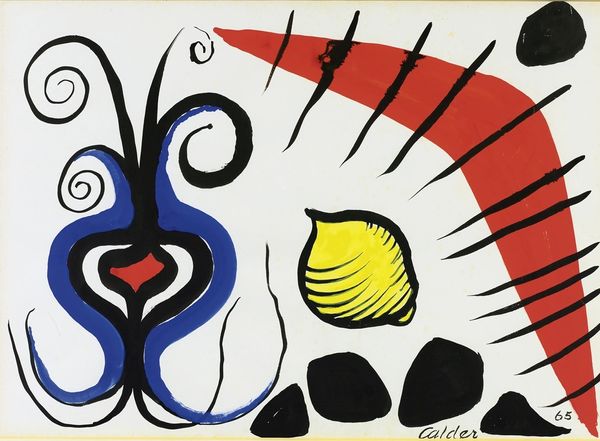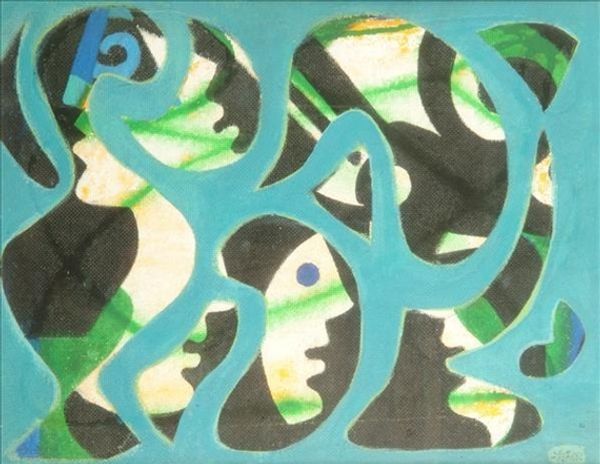
Copyright: Charles Gibbons,Fair Use
Editor: Here we have Charles Gibbons' "Counterpoint" from 2018, an acrylic painting featuring these fluid, abstract shapes in primary colors. The surface of the painting looks relatively flat, not a lot of impasto or texture...What stands out to you when you look at this painting? Curator: The focus, for me, is the labor embedded in the careful application of acrylic paint. The smooth, almost digital-looking finish belies the handwork involved in layering and blending. Gibbons challenges us to consider the perceived hierarchy between mass-produced digital art and "high art" painting by mimicking a vectorized aesthetic through manual means. What are the implications of this artistic choice? Editor: I guess it questions what we value, right? Like, is it about the skill, or just the final image? I’m also curious about the use of such clean lines and geometric-ish shapes. Does that speak to something specific? Curator: Absolutely! It is about understanding the history of geometric abstraction - how the simplicity and standardization of shapes reflects an increasing industrialization. And consider the title: “Counterpoint”. It implies not only contrasting colors, but opposing methods, forcing us to consider where the true “value” lies – in the design or its execution. How does its accessibility and vibrant color relate to movements like pop art, known for embracing popular culture? Editor: It does kind of feel mass-produced, even though you can tell it’s hand-painted when you look closely. Okay, that makes way more sense now. I was so caught up in the colors I didn't even think about production! Curator: Exactly. It’s a deliberate tactic. It’s forcing you to consider the inherent tensions between artistic labor and the sleek finish indicative of mass culture and consumption. It asks us to reflect on how technology has impacted artistic production. Editor: That's given me a lot to consider, it almost feels like the painting is challenging me to consider value in a new way. Curator: Precisely! And hopefully prompts others to engage critically with artistic production itself, thinking past the superficial beauty.
Comments
No comments
Be the first to comment and join the conversation on the ultimate creative platform.
